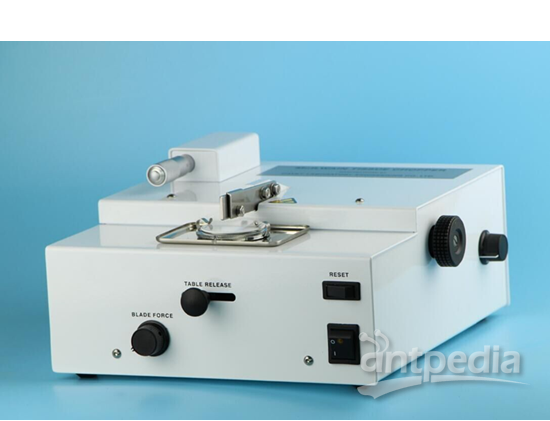Thrombin signaling and protease-activated receptors

Thrombin is an extracellular protease that is involved in the clotting of blood and inflammation through its action on platelets and endothelial cells in the vasculature and that plays a role in thrombosis and myocardial infarction. The protease activated receptors PAR1 and PAR4 are cellular targets of thrombin signaling and members of the G-protein coupled receptor gene family. Both of these receptors are cleaved in their N-terminus by thrombin, unmasking a portion of the receptor sequence that acts itself as a tethered peptide ligand that activates the receptor. The tethered ligand that activates PAR1 is SFLLRN and the tethered ligand that activates PAR4 is GYPGQV. Other members of the family include PAR2 which is activated by trypsin rather than thrombin and PAR3 which seems to play a role in the activation of other PARs but does not itself transduce a signal directly. Addition of peptide agonist exogenously in solution can also activate PAR1, PAR2 and PAR4. PAR1 activation may be involved in the dilation of arteries during inflammation through the action of thrombin on endothelial cells and in platelet activation by thrombin during clotting. PAR1 and PAR2 activation cause bronchodilation in airway and may protect against asthma. PAR 4 activation by thrombin activates platelets during clotting and mice lacking PAR4 have impaired clotting and platelets that do not respond to thrombin signaling. The action of thrombin on PAR1 and PAR4 on platelets and endothelial cells may also contribute to vascular permeability and inflammation.Activated PARs appear to couple primarily through Gq-mediated stimulation of inositol phosphate metabolism and intracellular calcium levels to activate platelets. PAR1 and PAR4 also appear to couple to multiple G-proteins and transduce signals through more than one G-protein mediated pathway in some circumstances. Signaling by PAR1 and PAR4 through Galpha12 pathways couples to Rho signaling and changes in cytoskeletal structure and cell shape. Gi activation does not appear necessary for platelet activation by PAR1 or PAR4, and platelet activation by these receptors requires an ADP signal perhaps acting through the platelet-associated purinergic receptor P2Y12. Gi-coupled signaling may play a role in mitogenic PAR signaling in some settings through Map kinase activation. Activation of Rho by PAR1 can induce cellular transformation through a Galpha12 mediated mechanism and sustained rho-dependent phosphorylation of the myosin light chain by PAR1 contributes to cytoskeletal changes and activation of platelets. Since the activation of PARs by protease cleavage is irreversible the primary mechanism for down-regulation of the PAR signaling cascade appears to be internalization and degradation of PAR receptors.
Contributor:
REFERENCES: Chatah, N.E., Abrams, C.S. (2001) G-protein-coupled receptor activation induces the membrane translocation and activation of phosphatidylinositol-4-phosphate 5-kinase I alpha by a Rac- and Rho-dependent pathway. J. Biol. Chem. 276(36), 34059-65 Chen, X., Berrou, J., Vigneau, C., Rondeau, E. (2001) Role of the third intracellular loop and of the cytoplasmic tail in the mitogenic signaling of the protease-activated receptor 1. Int J Mol Med 8(3), 309-14 Hamilton, J.R., Moffatt, J.D., Frauman, A.G., Cocks, T.M. (2001) Protease-activated receptor (PAR) 1 but not PAR2 or PAR4 mediates endothelium-dependent relaxation to thrombin and trypsin in human pulmonary arteries. J. Cardiovasc. Pharmacol. 38(1), 108-19 Keogh, R.J., Houliston, R.A, Wheeler-Jones, C.P. (2002) Thrombin-stimulated Pyk2 phosphorylation in human endothelium is dependent on intracellular calcium and independent of protein kinase C and Src kinases. Biochem Biophys Res Commun 294(5), 1001-8 Kim, S. et al. (2002) Protease-activated receptors 1 and 4 do not stimulate G(i) signaling pathways in the absence of secreted ADP and cause human platelet aggregation independently of G(i) signaling. Blood 99(10), 3629-36 Missy, K. et al. (2001) Rho-kinase is involved in the sustained phosphorylation of myosin and the irreversible platelet aggregation induced by PAR1 activating peptide. Thromb Haemost 85(3), 514-20 Missy, K. et al. (2001) Rho-kinase is involved in the sustained phosphorylation of myosin and the irreversible platelet aggregation induced by PAR1 activating peptide. Thromb Haemost 85(3), 514-20 Nakanishi-Matsui, M. et al. (2000) PAR3 is a cofactor for PAR4 activation by thrombin. Nature 404(6778), 609-13 Nguyen, Q.D. et al. (2002) RhoA- and RhoD-dependent regulatory switch of Galpha subunit signaling by PAR-1 receptors in cellular invasion. FASEB J 16(6), 565-76 Ponimaskin, E., et al. (2000) Acylation of Galpha(13) is important for its interaction with thrombin receptor, transforming activity and actin stress fiber formation. FEBS Lett 478(1-2), 173-7 Sambrano, G.R. et al. (2001) Role of thrombin signalling in platelets in haemostasis and thrombosis. Nature 413(6851), 74-8 Shaun Coughlin. Thrombin signaling and protease-activated receptors. Nature, vol 407, 2000, 258-263. Tiruppathi, C. et al. (2000) G protein-coupled receptor kinase-5 regulates thrombin-activated signaling in endothelial cells. Proc Natl Acad Sci U S A 97(13), 7440-5 Whitehead, I.P., Zohn, I.E., Der, C.J. (2001) Rho GTPase-dependent transformation by G protein-coupled receptors. Oncogene 20(13), 1547-55




















